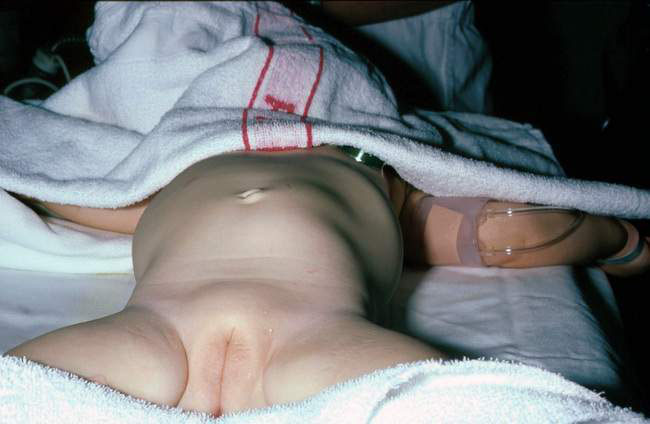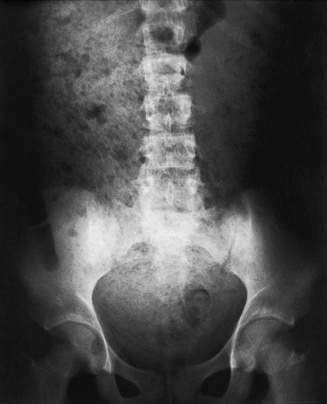20.1 Abdominal pain and vomiting
Abdominal pain in the first 3 months of life
Infantile colic is a very common condition that usually commences in the first few weeks of life. The cause is poorly understood. The term ‘colic’ is sometimes used because of the common assumption that this pattern of behaviour is due to colicky abdominal pain but this explanation is controversial, and there are other more likely hypotheses including an irritable temperament (see Chapter 4.1). The term ‘infant irritability’ is now more commonly used.
The infant with irritability/colic:
Abdominal pain later in the first year
Intussusception
The infant with intussusception looks pale, lethargic, anxious and unwell. A vague mass may be felt in the right or left upper quadrants of the abdomen but, once abdominal distension has developed, the mass becomes obscure and difficult to palpate (Fig. 20.1.1). The apex of the intussusceptum may be palpable on rectal examination in a few, and the examining glove may be blood-stained. A plain X-ray of the abdomen will often be normal but may show an unusual bowel gas distribution or features of bowel obstruction. Ultrasound examination may be helpful in making the diagnosis. Where intussusception is suspected clinically or confirmed on ultrasonography, a gas or barium enema must be performed (unless the child has peritonitis). The enema will demonstrate the position of the apex of the intussusception (Fig. 20.1.2).

Fig. 20.1.2 Abdominal X-ray demonstrating air enema with apex of intussusception in the right lower quadrant.
Acute abdominal pain in older children
Acute appendicitis
Differential diagnosis
Other conditions that may mimic acute appendicitis are relatively uncommon. Meckel diverticulitis has symptoms identical to those of appendicitis, such that differentiation is possible only at laparoscopy or laparotomy. Pain in the right iliac fossa may represent radiation from torsion of the right testis or a strangulated inguinal hernia, and highlights the importance of examination of the genitalia in all boys with lower abdominal symptoms (see Chapter 9.1). Acute abdominal pain may occur with renal colic, pyelonephritis and, at times, acute glomerulonephritis. Pain and tenderness is usually referred to the loin. Urine analysis and radiology will confirm the diagnosis. In Henoch–Schönlein purpura, the abdominal pain is often severe and colicky, and may be accompanied by vomiting. The characteristic skin lesions over the buttock and legs may be inconspicuous or absent when the child is first examined.
It is unusual for constipation in an otherwise normal child to produce sufficient abdominal pain to suggest a surgical emergency. A plain X-ray of the abdomen will demonstrate the extent of faecal accumulation (Fig. 20.1.3). It should be remembered, however, that the diagnosis of constipation can almost exclusively be made on clinical grounds. Abdominal X-ray is not a standard tool in assessing for constipation and should be reserved solely for other indications or more complex cases.
Stay updated, free articles. Join our Telegram channel

Full access? Get Clinical Tree




